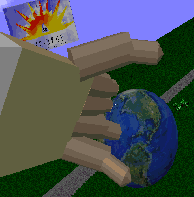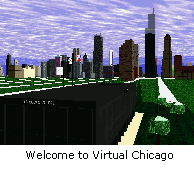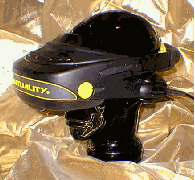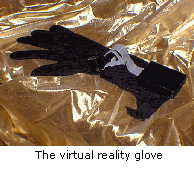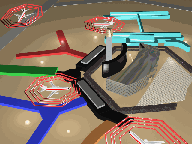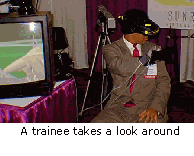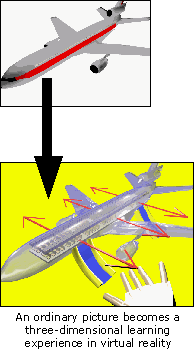|
Virtual reality is a cutting-edge technology that allows us to step through the computer screen into a three-dimensional, interactive environment. By putting on a special visor and glove, it places us inside of a simulated environment that really looks and feels like the real world. Through virtual reality, we're convinced we're in another world experiencing some event, and doing things that don't physically exist.
When we put on a virtual reality visor we enter a world where everything is possible- visiting New York, learning to operate heavy machinery, traveling back into time to Ancient Rome, or flying through the solar system. Virtual reality combines the power of a computer, the information of an encyclopedia, the imagery of a motion picture, and the excitement of real life into one new learning experience.
When we put on a virtual reality visor we enter a world where everything is possible- visiting New York, learning to operate heavy machinery, traveling back into time to Ancient Rome, or flying through the solar system. Virtual reality combines the power of a computer, the information of an encyclopedia, the imagery of a motion picture, and the excitement of real life into one new learning experience.
We interact in virtual reality the same way we interact with the real world. We can pour a cup of virtual coffee with our hands. We can look at the bottom of a table in a virtual world if we physically bend down and turn our heads upward- just as we would in real life. We can even "throw" a ball that doesn't physically exist by "grabbing" the ball, and propelling our arms forward in a throwing motion. A helpful analogy to better understand the nature of virtual reality is that of a child exploring a forest for the first time. A child will best learn about the forest not from reading about it or listening to a teacher lecture, but by walking into it- becoming a part of it. The child is free to explore the forest any way she likes. Discovery and experience become the best teacher.
ELEMENTS OF VIRTUAL REALITY
Virtual Reality Visor
The essential ingredient of virtual reality is a special visor that transports us into a virtual world. In the visor, we see and feel everything three-dimensionally, just like in real life. The visor looks like a high-tech SCUBA mask and gives us our own first-person perspective into a 3-D world, a far cry from one-dimensional books and computer screens.
Virtual Reality Gloves
Special virtual reality gloves are used to make gestures and interact with objects in the virtual world. We are able to see our hands in the virtual world to grab objects, pick things up and manipulate them. Virtual reality gloves provide a new, natural way to interact and communicate with computers.
|
|
